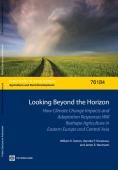This book is organised as follows: the first chapter examines the pattern of structural transformation in Middle East and North Africa, or MENA and summarises the role of various factors examined thoroughly in the rest of the volume. The second chapter examines the correlates of this overall disappointing performance. At the macro level, MENA countries have been unable to maintain depreciated (undervalued) real exchange rates for long periods, yet such undervaluation has proved important to offset the market failures and poor institutional environment that severely hit the dynamic non-resource-intensive traded sectors.

This issue ADB's quarterly magazine explores the concept of green growth: the embracing of environmentally sound and sustainable policies with the need to maintain high economic growth. It features an exclusive interview with leading expert Ashok Khosla, who takes a hard look at the promises and failings of green growth. In other stories, the issue looks at pioneering efforts to deliver medicine through a soda company's distribution network. There is also an article on Cambodia's efforts to pursue green growth.

One of the strong messages that came out of the United Nations Climate Change conference in Durban was that the private sector has to play an important role if we are to globally move toward a low carbon, climate resilient—or “climate compatible”—future. However, private investment will only flow at the scale and pace necessary if it is supported by clear, credible, and long-term policy frameworks that shift the risk-reward balance in favor of less carbon-intensive investment. The private sector also needs information on where to invest in clean energy in emerging markets, and it needs policy support to lower investment risk. Barriers to low carbon investments often include unclear and inconsistent energy policies, monopoly structures for existing producers, stronger incentives for conventional energy than clean energy, and a domestic financial sector not experienced in new technologies.
